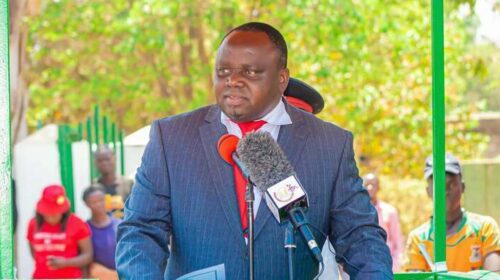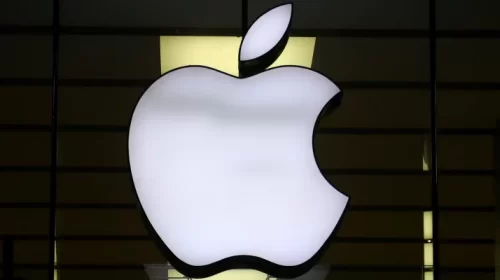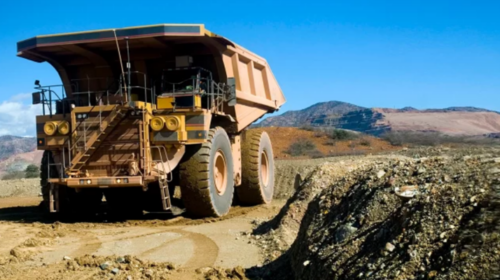Ivanhoe Mines’ Kamoa-Kakula to Export Copper via Lobito Railway
Term sheet allocates Kamoa-Kakula up to 240,000 tonnes of annual capacity for export of copper products along the Lobito Corridor from 2025
■
Lobito Corridor passes through Ivanhoe’s Western Foreland licences and within five kilometres of
Kamoa-Kakula
■
Lobito Corridor will transform economic and social development of the DRC, as well as its neighbouring countries, accelerating regional economic development
■
Lobito Corridor is supported by the United States and G7 nations through the Partnership for Global Infrastructure and Investment
Ivanhoe Mines’ (TSX: IVN) (OTCQX: IVPAF) Executive Co-Chair Robert Friedland and President Marna Cloete announce last week, during the 2024 Mining Indaba at the Cape Town International Convention Centre (CTICC) in South Africa, that Kamoa-Kakula has signed a term sheet outlining the key terms for a Reserved Capacity Agreement for transporting mineral products from the Kamoa-Kakula Copper Complex along the Lobito Atlantic Railway Corridor.
The Reserve Capacity Agreement, to be based on the non-binding term sheet, will allocate Kamoa-Kakula the right to transport along the Lobito Corridor a minimum of 120,000 tonnes and a maximum of 240,000 tonnes per annum of blister-anode or concentrate.
The term sheet outlines a minimum term for the agreement of five years commencing in 2025, following a ramp-up year in 2024.
The costs of exporting mineral products along the Lobito Corridor are expected to be cheaper than the current market price for trucking via the existing export routes (as shown in Figure 1), and the rates are anticipated to reduce further as volumes transported along the line increase.
The term sheet also extends the initial trial shipments, as originally announced on August 18, 2023, with up to a further 10,000 tonnes to be transported along the Lobito Corridor during 2024. The initial trial shipments commenced in December 2023, as announced on January 2, 2024.
Ivanhoe Mines’ Founder and Executive Co-Chairman, Robert Friedland commented:
“We admire the hard work of the Lobito Corridor consortium and Trafigura, working with their partners in the Democratic Republic of the Congo and Angola, to build a new supply chain that is fast becoming one of the most important trade routes for vital copper metal in the world.
“The transformative economic corridor will unlock more copper projects due to the lower logistical costs. Cheaper logistics increase the amount of economically recoverable copper across the Copperbelt, as cut-off grades can be lowered.
This makes a significant impact on discoveries made in the DRC, such as the recent high-grade and open-ended Kitoko copper discovery in the Western Foreland, where we are stepping up exploration activities this year to find more ultra-green copper metal. Kitoko is located only 30 kilometres from the existing rail line.”
Trafigura Group, Executive Chairman and CEO, Jeremy Weir commented:
“We very much welcome Ivanhoe Mines’ Kamoa-Kakula in becoming the first customer to sign a term sheet to export minerals along the Lobito Rail Corridor.
As a consortium member, Trafigura has also now signed a term sheet over a minimum term of six years, supporting the consortium’s aim to grow the volumes on the corridor so that it becomes the leading rail transport link in sub-Saharan Africa.”
The Lobito Atlantic Railway Corridor is a rail line that links the Democratic Republic of the Congo (DRC) Copperbelt to the port of Lobito in Angola.
The rail line extends 1,289 kilometres east, from the port of Lobito to the Angola-DRC border town of Luau. The line then extends a further 450 kilometres east into the DRC, on the Société Nationale des Chemins de fer du Congo (SNCC) rail network, to the city of Kolwezi (see Figure 1).
The line passes within five kilometres of the Kamoa-Kakula license boundary and through Ivanhoe’s Western Foreland holdings (see Figure 2).

Figure 1. Map of export routes currently used by Kamoa-Kakula in red, as well as the Lobito Corridor route in orange. Logistics costs currently account for ~30% of Kamoa-Kakula’s total cash costs (C1), due to the long in-land distances travelled by road for exports to reach port.
Kamoa-Kakula currently trucks its copper concentrates by road across sub-Saharan Africa to the ports of Durban in South Africa and Dar es Salaam in Tanzania, as well as Beira in Mozambique and Walvis Bay in Namibia.
In 2023, approximately 90% of Kamoa-Kakula’s concentrates were shipped to international customers from the ports of Durban and Dar es Salaam, where an average round-trip takes approximately 40 to 50 days.
The distance from Kamoa-Kakula to the port of Lobito is approximately half that compared with the port of Durban (see Figure 1), and transportation by rail is significantly quicker and less energy-intensive.
An initial trial shipment, consisting of two trains carrying approximately 1,110 tonnes of Kamoa-Kakula’s copper concentrate, was loaded onto rail wagons at the Impala Terminals warehouse in Kolwezi and departed west along the Lobito Corridor on December 23, 2023.
The shipment arrived at the port of Lobito eight days later on December 31, 2023. Since then, shipments transporting the remaining tonnes from the trial shipment have continued regularly.

Figure 2. Map of Kamoa-Kakula and Western Foreland licences, existing local road and rail infrastructure, as well as the future rail spur connecting the Lobito Corridor to Kamoa-Kakula.
LAR is a consortium that has a 30-year concession for railway services and supports logistics on the Lobito Corridor. It is comprised of leading global commodities trading group Trafigura Pte Ltd. (Trafigura), of the Republic of Singapore, Mota-Engil Engenharia e Construcao Africa SA (Mota-Engil), of Porto, Portugal, and Vecturis SA, of Brussels, Belgium.
The consortium has committed to invest $455 million in Angola and up to a further $100 million in the DRC on the improvement of the Lobito Corridor’s rail infrastructure, capacity and safety, including rolling stock consisting of over 1,500 wagons and 35 locomotives.
The Lobito Corridor will also reduce congestion on the DRC’s other logistics corridors, and dramatically reduce the cost of exporting from and importing into the DRC Copperbelt.
On September 9, 2023, the United States and European Union jointly announced their support for the Lobito Corridor through the Partnership for Global Infrastructure and Investment (PGII).
The PGII, founded in 2022, is a collaborative effort by G7 nations to fund infrastructure projects in developing nations. DRC, Angola and Zambia will benefit from accelerated social and economic development as a direct consequence of this support.
The Lobito Atlantic Railway Corridor is expected to significantly improve the logistical costs and reduce the Scope 3 emissions carbon footprint of Kamoa-Kakula copper exports, especially once the rail spur has been built connecting the line directly to Kamoa-Kakula.
The development of Ivanhoe’s current and future copper discoveries within the Western Foreland basin will also greatly benefit from the Lobito Corridor (the proximity of the rail line to Ivanhoe’s projects is shown in Figure 2).

The first train of the trial shipment of copper concentrate, carrying over 600 tonnes across 16 wagons, arrived at the Atlantic Ocean port of Lobito, Angola on December 31, 2023.

The initial trial shipment of Kamoa-Kakula copper concentrate on arrival at the Lobito port, prior to unloading.
![]()





